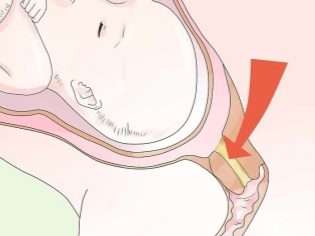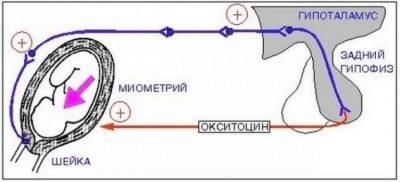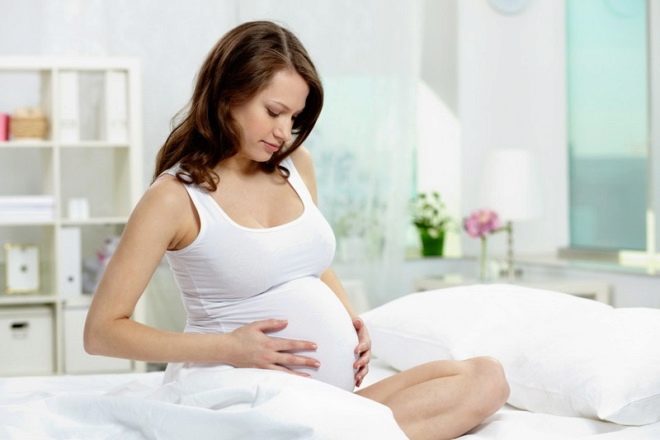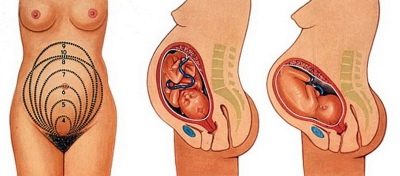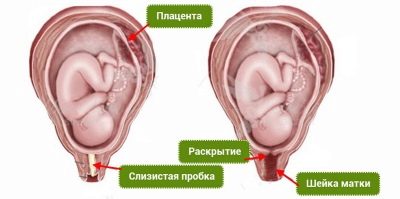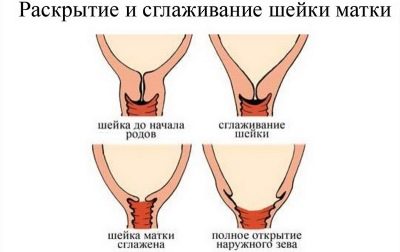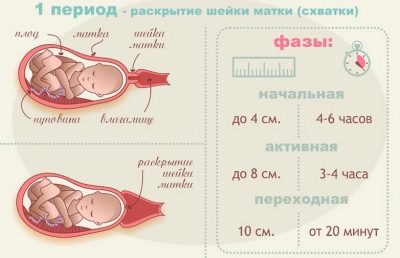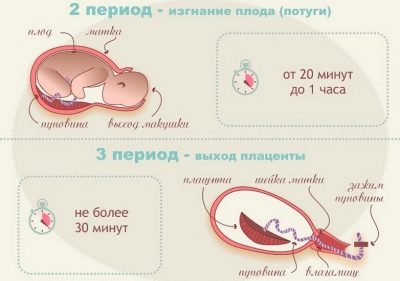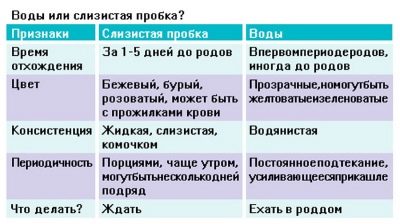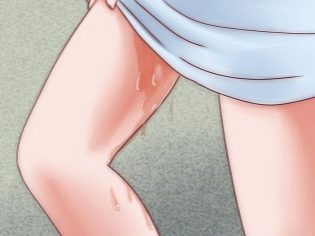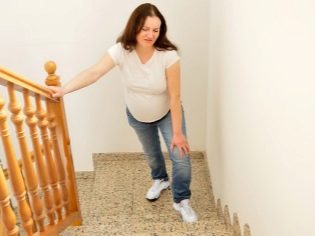How to understand that childbirth has begun: important signs
The last days of pregnancy are usually very disturbing and restless. Regardless of what kind of child the woman expects, she is concerned about how the birth will begin. The fact is that each delivery can start in different ways, and therefore the experience does not guarantee that the scenario of previous births will be repeated to the exact match. Primiparoparoids survive the most, they have no generic experience at all. In this article, we will explain how to understand that childbirth is approaching, and how to determine that it has already begun.
How to determine the approximation?
Date of birth - a big mystery of nature. Despite the fact that obstetricians indicate in the exchange card of the DA (estimated day of birth), no one will tell the exact date when the baby decides to come into the world. Only 5% of babies are born exactly in the DA. All others choose for themselves other dates - before or even after the designated period.
That is why future mothers are so afraid not to notice, to miss, to confuse the beginning of labor with other sensations, which are so rich in the most difficult third trimester.
The best helper and prompter of a pregnant woman is her own organism. Usually, he starts giving “hints” in advance that the labor is approaching.
Officially, the prenatal stage starts at 38 full obstetric weeks. From this period it is necessary to listen as carefully and reverently as possible to changes in one’s own state. The child is already quite ripe, he is ready to be born on any given day.
Usually, even those women who did not have training bouts for the period of carrying a baby, they will start at 38 weeks. They manifest themselves as short-term spontaneous strains of the muscles of the uterus, which quickly retreat, do not have a fixed interval between them. This means that after one training bout the other can come in half an hour, and after three hours, and only the next day. Labor contractions are cyclical and always with a certain interval characteristic of a certain period of childbirth in time.
After 38 weeks, on average, precursors of labor also appear. Here the expectant mother should be extremely careful - some preliminary signs can be very similar to the complications of pregnancy. For example, following an increase in the amount of vaginal discharge, it is easy to miss the leakage of amniotic fluid, and a vaginal infection with yellowish, gelatinous discharge can be confused with the beginning of the separation of the mucus plug.
A distinctive feature of the generic process from the various preparatory "events" is irreversibility. If childbirth begins, they cannot be stopped, slowed down or weakened, since they are an exclusively reflex act. A woman can influence precursors and change their character with medicines and other methods.
When do they start?
Childbirth is the logical conclusion of complex and multi-stage processes that take place in the female body on the threshold of the birth of a child. Each of these processes is closely related to the others. When asked when labor will begin, the answer is one - when all internal processes reach maximum development.
The uterus gets big. Reproductive female body is gaining weight and reaches solid size.The neuromuscular apparatus of the uterus, a few weeks before birth, begins to prepare for the upcoming labor contractions. In the cells of the myometrium (structural tissue of the uterus) begins to produce a substance that will help the tissues to shrink - actomyosin. At 38 weeks and a little later, uterine tissues get rid of excess nerve fibers. This is a natural physiological mechanism of anesthesia.
By childbirth must fully ripen the placenta. A week before the onset of labor, she begins to produce oxytocin. She helps in this pituitary gland. Proper concentration of this hormone in the female body leads to the onset of contractions. The hormonal factor is crucial - in order for labor to begin, it is necessary for the progesterone level to decrease. This hormone was responsible all nine months for the preservation of pregnancy, for the creation of optimal conditions for the development of the fetus. By birth, it is no longer necessary, and progesterone is reduced in proportion to the growth of estrogen and oxytocin.
Before childbirth, glycogen, ATP, phosphorus compounds and electrolytes begin to accumulate in the woman’s body. They make the uterus more resilient to the upcoming bouts and generally increase the energy potential of the future mother.
One of the important factors that has a direct effect on the timing of the onset of labor, is the state of the nervous system. When it fails, the preparation of the uterus for childbirth slows down, the hormonal balance changes, which can cause both preterm labor and prolonged pregnancy.
Forerunners - Myths and Reality
The fact that the birth is close, a woman can tell the so-called "precursors" - the first signs, the combination of which suggests the approach of imminent labor. For all women there is no single list of symptoms, “precursors” depend on the individual characteristics of the female body. The most common signs are as follows.
Abdominal prolapse
The tummy of the pregnant woman is shifted down, its shape changes visually. This is due to the establishment of the fetal head to the inner throat - the exit from the uterine cavity. Notice that the stomach is lowered, the woman can independently. It becomes much easier to breathe, because the bottom of the uterus no longer puts pressure on the diaphragm, reduces heartburn, which exhausts a woman, and the uterus stops propping up the stomach. But the pressure on the bladder and intestines is increasing, which is why the urge to urinate increases and becomes more frequent, uncontrolled urine leaks can occur when coughing or laughing, and constipation increases.
Abdominal ptosis in primiparas usually occurs 3-4 weeks before childbirth. For multiparous symptoms, they appear 1-4 days before the onset of labor, and sometimes even during the first labor contractions or just a few hours before them.
Change gait, pain in the pelvis
After the baby takes a “pre-start position” in the uterus, the increased load falls on both the bones and muscles of the pelvis. Therefore, the gait becomes awkward, the woman more and more "waddles over" when walking. Appear pulling and breaking weak pain in the bones of the pelvis, in the ligaments. If the symphysitis has already begun, then the pain in the region of the symphysis joint becomes worse.
Most often, a woman may experience discomfort when she has to stand for a long time, when rising from a bed from a prone position, while climbing a ladder.
Allotment
Vaginal discharge changes quantitatively and qualitatively. They become more abundant, liquefied, as the concentration of progesterone decreases with each passing day. For secretions you need to follow especially closely - if they appear jelly-like impurities, it can mean the beginning of the discharge of mucus plug. The stopper during pregnancy closes the cervical canal located in the cervix so that bacteria and viruses do not penetrate into the uterus, so that the environment in the uterus remains sterile.
Cork can be separated in parts or out entirely.In primiparous people, this can happen two weeks before childbirth; for multiparous, the cork goes a few days before the onset of labor contractions, already in their process or when pouring water.
Weight loss
A woman before the birth begins to lose weight. This sign was noticed long ago. Such an unexpected "weight loss" for a couple of kilograms is associated with a decrease in the amount of intercellular fluid. This process also begins due to a decrease in progesterone levels. In addition, the woman's body begins to cleanse, therefore, often a few days before the birth begins diarrhea.
Baby behavior
Crumbs in most cases before childbirth for 4-5 days subside, no longer actively move. The child also stores energy, because the birth process will require great effort from him. In addition, the baby has already grown so much that it is difficult for him to move in the uterus - it becomes too close for him.
At this stage, it is important to continue to record episodes of reduced activity. If there is no movement at all for 12 hours, it is necessary to consult a doctor.
"Nesting"
The syndrome of "nesting" is the manifestation of the animal instinct of the arrangement of the "nest" - the dwelling before the appearance of offspring in it. So do many birds, animals. This is manifested in the fact that a woman pulls out to do the cleaning, to put everything in order, once again to rearrange the children's things in the prepared children's room. It is believed that the instinct has a beneficial effect on the psyche of a pregnant woman, helping to cope with fears of childbirth and dark thoughts. It does not appear at all and is not a mandatory feature.
Neck ripening
This is an objective sign, which is regarded by physicians as practically the only reliable one. The cervix during pregnancy is normally tightly closed. By childbirth, it starts to become shorter, the round muscle softens - it is important that the neck with the onset of the labor process opens and releases the baby. Assess the condition of the cervix may begin as early as 38 weeks of pregnancy. This can only be done by an obstetrician-gynecologist at a scheduled admission; a woman cannot examine the cervix independently.
The neck reacts sensitively to hormonal effects, and therefore, when the hormone imbalance is disturbed, with a number of other factors, a woman can hear from the doctor the verdict that her neck is immature. In this case, after 39 weeks, they will carry out drug maturation - affect the woman's body with hormonal and other drugs that will help the neck to become shorter and softer. Normally, before birth, the cervix is shortened to 1-1.5 centimeters. In this case, they say that the neck is mature and childbirth is already on the way.
Other signs and symptoms
Other signs include a large group of symptoms that have long been noticed by pregnant women as precursors — insomnia, and increased sleepiness, and appetite disturbances — excessive or none, and nausea, and even vomiting several days before childbirth, anxiety, irritability. , touchiness, tearfulness.
It should be noted that the harbingers of childbirth are shrouded in a mass of myths that are far from medicine. Therefore, it is advisable not to write off any changes in the state of health and condition to the signs described by someone on the forums, but to discuss it with your doctor. Only he can in time distinguish a precursor from a pathology.
Symptoms of the onset of labor
Despite all the signs that may accompany the last couple of weeks before childbirth, reliable signs that judge the beginning of childbirth, only two - this is the beginning of labor contractions and discharge of water. According to him, both the woman and the doctor will be able to accurately determine that childbirth has begun. All other symptoms and presumed precursors of diagnostic value in fact do not have. So, it is time to talk more about two reliable signs that symbolize the beginning of labor.
Contractions
With the development of all the prerequisites - nervous, hormonal, humoral, physiological, true labor contractions begin. These are rhythmic contractions of the fibers of the uterus, they have a clear pattern, periodicity, and contraction do not develop. It is this feature that will help to distinguish between true and false contractions, which can be repeated as the training activity of the female body in the last weeks before the upcoming birth.
If the contractions do not subside after the pill "No-Shpy", a warm soul, if they do not change the intensity after changing the position of the body, then it is very likely to say that the birth has begun.
The first contractions are not painful. It is only in the films that women are shown who, with a groan, unexpectedly “fold” in half, when childbirth begins. The first uterine contractions are fairly painless and feel like pain during menstruation.
Most often, the first contractions are repeated every 30–40 minutes. Each fight lasts a few seconds - usually no more than 20. After it, the woman has enough time to rest, which should be used as much as possible for relaxation, relaxation, so as not to have muscle clamps. With such contractions, there is no need to go to the maternity hospital; a woman can be at home until the contractions begin to repeat more often. With an interval of 5-10 minutes between contractions, you need to call an ambulance and go to the hospital. The first contractions are called latent, they can last 8-10 hours, the disclosure of the cervix by the end of the period will be only 3 centimeters.
The second period of contractions is called active. The contractions are stronger, frequent - by the end of this stage they are repeated every 2-3 minutes, the duration of each contraction is up to 50 seconds. The neck opening is up to 7 centimeters. It is advisable to spend this period under the supervision of doctors, since the birth of the baby is already inevitably approaching. Active contractions are usually observed within 3-5 hours.
The third period of bouts will last only half an hour or more. These contractions are called transient, they flow into the attempts, which the woman learns from the keen desire to empty her intestines - the neck is fully opened, the head begins to be born. Transitional bouts - the strongest and most prolonged. They are repeated every 1-1.5 minutes and last for a minute.
Anyone who doubts whether it will be possible to recognize true labor contractions when labor begins, I would like to tell you about the old obstetric joke, which says that a woman who doubts whether the birth has begun does not really give birth. When a woman gives birth, she does not doubt. True contractions are really so specific that it is very, very difficult to confuse them with other uterine contractions.
Water
It should be noted that the birth, starting with contractions - classic, normal and healthy. This is how up to 90% of all births on the planet begin, since physiologically this is the best option. Waters with them depart only in the second stage - with active contractions, when the disclosure reaches 4-6 centimeters. Under pressure from the head of the fetus, the fetal bladder burst and the amniotic fluid is discharged.
But in 10% of cases, childbirth begins with the discharge of water. They may well be leaking in small portions, or they may depart immediately in full. Childbirth in this case is almost always considered complicated. If contractions do not develop on their own after 6 hours, the woman is given medical induction of labor. If it does not help, then an emergency caesarean section is performed.
Special tests can help distinguish water leakage from urine, amniosystems, which are sold in pharmacies and there is in every antenatal clinic where a woman may turn with suspicion of leakage and where she will be given a rapid assessment of the composition of secretions.When dribbling, signs such as an increase in vaginal discharge should be alerted, especially when a woman spends several hours in a horizontal position and then sits down or stands. Wet stains may appear on the bedding.
A one-time outpouring of water requires attention from a woman. It is necessary not to panic, but to immediately estimate the approximate volume of the amniotic fluid, its color, smell and consistency. Wait, when the start of labor at home, in this case is not necessary. After the discharge of water or suspicion of a leakage that has begun, you should immediately go to the obstetric institution. The dry period should be monitored by a physician.
If the waters are not clear, but greenish, with blood or others, you should definitely inform your doctor. Often this is a sign of fetal hypoxia and a direct indication for cesarean section without waiting time for labor and induction of labor.
During the first and re-pregnancy
Precursors in primiparous appear in advance, whereas in multiparative women immediately before childbirth. The time interval in the second case is very small, it can be limited to several days or even hours. And the birth itself begins in different ways. Repeated people usually take everything calmly, they have generic experience, and therefore do not show heightened emotionality in the run-up to childbirth and do not take for symptoms of approaching labor activity some symptoms that are not at all. Hypersensitivity is the lot of women who are going to give birth for the first time.
Therefore, women, who are waiting for the first birth, usually notice the onset of labor faster, whereas those with multiple characteristics simply do not attach importance. The severity of sensations during first birth is stronger, and the duration of each stage is cumulatively longer.
If the second, third delivery and follow-up are on the way, the woman should consult a doctor if she has three or more “precursors” at the same time, and it is necessary to arrive at the maternity hospital earlier - when contractions are repeated every 10 minutes. The birth canal of such women in labor is better prepared, the disclosure of the internal and external pharynx of the uterus is faster, there is a higher likelihood of rapid, rapid birth.
After stimulation
If a decision is made to stimulate labor activity for medical reasons, the onset of labor will take place under the supervision of doctors. Induction of labor involves a large range of medical measures - preparation of the cervix, amniotomy (puncture of the bladder and discharge of amniotic fluid), stimulation of contractions by administering doses of oxytocin. After puncture of the bladder, contractions usually develop within 3-4 hours. If this does not happen, the generic activity is stimulated by medication. In the absence of effect, a cesarean section is made.
Premature
As already mentioned, childbirth does not always occur on time. The fact that preterm labor began, a woman can tell a variety of symptoms, while the precursors as such may not be. Births are considered premature, starting at 28 weeks and 37 weeks of gestation.
In most cases, doctors see the prerequisites for preterm labor, report this to the expectant mother, and always offer hospitalization and constant monitoring. In some situations, such premature births begin suddenly and are an unpleasant "surprise" for both the woman in labor and the doctor who observed her during pregnancy.
What signs may indicate a probable onset of labor before the date set by obstetricians:
- intrusive feeling of heaviness in the lower abdomen;
- belly drops before 35 weeks of pregnancy;
- the uterus often comes in tone and is in tension for a long time;
- pink, bloody, or bleeding from the genitals appeared;
- the woman feels a lot of pressure in the perineum and pelvis;
- shingles appear.
Premature birth in itself poses a lot of dangers, and therefore, when at least one of the above symptoms appears, a woman should consult a doctor and not refuse hospitalization if it is offered by experts. At occurrence of bloody discharges it is necessary to immediately call an ambulance.
Is it possible to speed up?
Women who have already delivered the baby to the 39-40 week, almost always wonders if it is possible to speed up the birth, because the future mother's body is overloaded and very tired by the end of pregnancy. Medicine has a very specific opinion on this it is impossible to accelerate childbirth without urgent need outside the hospital; this can cause serious complications both for the mother and the baby.
In the people, it is widely believed that walking up the stairs and mopping help to bring about the beginning of labor. The same properties are attributed to sexual contacts - the semen contains natural prostaglandins, accelerating the opening of the cervix. It is considered that mother’s mother’s walks on foot, picking up squatting matches scattered on the floor, will help the “sat up” baby.
Different people's councils should be treated with great care. So, tips to drink castor oil can lead to severe debilitating diarrhea, to dehydration, and tips to breathe essential oils can lead to a respiratory allergic reaction.
Despite the fatigue of a woman who is understandable and completely natural to all, experts simply recommend patience. It is best to give birth without any stimulation, independently. After all, neither the folk methods, nor the medical induction of labor does not guarantee that the fights that have begun will be sufficient, coordinated, that there will be no primary weakness, which can become the basis for an emergency cesarean section.
If a woman previously had endometritis or abdominal muscle discrepancy, there is a scar on the uterus, usually there is no question of any stimulation at all, since the baby, who was “hurried”, can be born rapidly, which will increase the risk of injury to both the mother and the fetus and in the case of the scar, a rupture may occur due to excessive contractile activity of the muscles.
The probability of postpartum complications is less, the less effort the woman put into ensuring that labor starts as soon as possible.
How to understand that childbirth has begun, see the following video.




